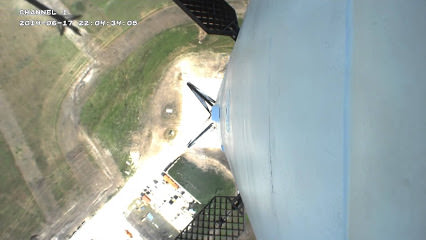Well, this is cool: A new video from SpaceX shows the Falcon 9 Reusable (F9R) rocket during a 1,000 meter test flight at the SpaceX facility in McGregor, Texas. This was the first flight test of a set of steerable fins that provide control of the rocket during the fly-back portion of the return flight. The fins deploy approximately 1:15 into the test flight and return to their original locked position just prior to landing.
This seems like a truly smooth flight!
These types of fins are not new, but are new for human space flight. They’ve been used on missiles and bombs to aid in precision targeting, and likewise will help the F9R to land precisely on target.
SpaceX confirmed that during the early tests flights of F9R, the landing legs will be fixed in the down position, however soon they will transition to a liftoff with the legs stowed against the side of the rocket with the legs extending just before landing. The company also said that future test flights of F9R will be at SpaceX’s New Mexico facility which will allow them to test in higher altitude flights, give them the chance to prove unpowered guidance and to prove out landing cases that are “more flight-like.”


Why do the fins look so weird and are full of holes? That doesn’t seem very aerodynamic…
the fins have a dual function …
Notice how the surface area of the vertical sides of the grates is about as large as the surface area of the fins themselfs.
This way you can control the rocket in 2 dimensions
– the rotation of the rocket along its vertical
– the rotation of the rocket along its horizontal
Now the rocket power can be more effectively used to control the final dimension:
– the vertical speed.
Overall, the expectation is to safe a lot of fuel.
I think part of their function is to act as brakes on the descent. Presumably they can also steer the rocket’s free fall to deliver it to the right neighborhood for the powered landing.
It is not the first use of such “grid fins” for human spaceflight. There are 4 grid fins on the Soyuz fairing, for use with the launch escape system. However, I think those are fixed and used only for stability of flight, not for active guidance.
Chichstick & Jim E: See wikipedia http://en.wikipedia.org/wiki/Grid_fin or google “grid fin”. They are for steering; they are not breaks, although they probably have a little bit more drag than conventional fins. They are less used than conventional fins but they are pretty efficient too. They are mostly used for bombs and such, but are occasionally used for other things.
Interesting entry. Apparently the easy folding is a major advantage. The Soyuz “potato masher” fins are huge, but apparently don’t steer. In the video, the fins “roll” the rocket during the powered descent, presumably as a test. The Falcon can roll during powered flight by vectoring the turbopump exhaust, even when only using one engine. Apparently these type of fins work poorly at transonic speeds. Perhaps the nearly-empty first stage slows quickly enough that this does not matter.
The folks over at SpaceX are dang good at pulling ‘rabbits out of the hat’ and surprising us with their continued genius… I like that. We’ve seen how they’ve made a non-flinching attitude of inventiveness WORK! The ‘Cold Warrior’ establishment types in the major defense industries appear calcified in comparison. SpaceX’s technique kind of reminds of ‘The Skunk Works’ approach, but in this case much of what they do is out in the open. I like openness, which is kind of a rare characteristic these days…
that is fantastic.
Those cows had a really good view!